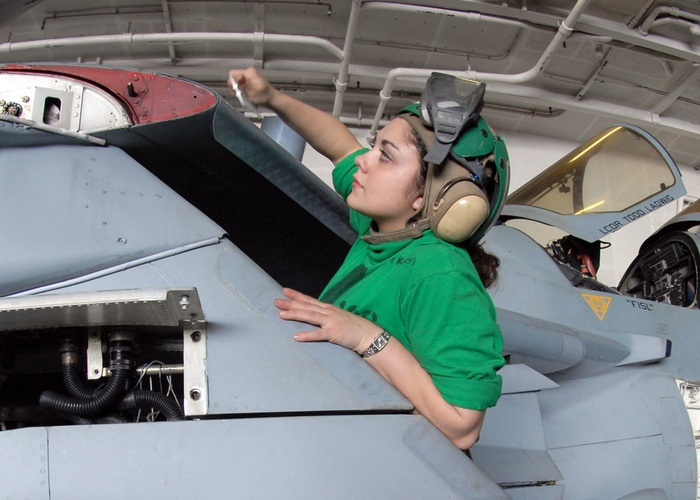Whether it’s an old airframe on the edge of retirement or a brand-new jet, a robust logistics chain and parts supply are of paramount importance. Greenwood Aerospace is your leader in government procurement, aircraft and parts storage and distribution, and military and defense contracting. Our expertise and services include:
- Fixed-wing aircraft and associated support
- Aircraft parts & accessories
- Military aircraft parts
- Storage and distribution of parts and supplies to your organization. We will operate as your own private warehouse and distribution network.
This is only a sample of our services and capabilities. To learn more about the services we provide for the defense and military industries. For additional information, you can also get in touch with us here or by emailing sales@governmentprocurement.com.
One of the most storied and widely used reconnaissance platforms in the U.S. Air Force is about to start the sunsetting process here in the next year or two. The Northrop Grumman E-8 Joint STARS, or simple ‘JSTARS’ as it is known in the field, has begun the retirement process. In fact, the first E-8 left for the bone yard nearly one year ago. In its place will come a much sleeker airframe: the E-11A Battlefield Airborne Communications Node, or “BACN.” No word on how that is pronounced, but we assume it is bacon! While it will be large shoes to fill, the E-11s are familiar to the scene; BACNs operated nearly nonstop out of the AOR, supporting ground troops and aerial assets in theater. In fact, BACN has operated out of Afghanistan or over Afghanistan since 2009. So, how will a Bombardier Global 6000 replace a heavy Boeing 707? Let’s find out.
What Does JSTARS Do?
The thing about technology is how fast it all changes. Think back to your first smartphone. My first was a Samsung, around 2011. I turned it on the other day just to see what it was like. Unbelievable what a difference a decade makes in technology; the Samsung seemed like a total dinosaur, even though it was a fine phone twelve years ago. Now transcribe that technological divide to a much larger scale.

The JSTARS has performed admirably for over three decades of service, much of which was spent orbiting for ten or more hours, operating out of the desert. But despite block upgrades, you still have a thirty-plus-year-old reconnaissance aircraft at the end of the day. Moreover, you have a heavy, four-engine jet with a large crew (up to 19 total), whereas tech improvement no longer requires so many personnel to do the same workload, nor does the equipment onboard require such a large jet. See, the Boeing 707, to loiter for the long durations required of the mission, must aerial refuel. And the JSTARS has an internal fuel capacity of 155,000 lbs, to begin with. In short, as tech changed and rapidly evolved, the platform size required to do the same jobs (and manpower required) shrunk considerably. Many of the functions that had been performed on the JSTARS manually could be done remotely. In fact, BACN packages were mounted to MQ-4 UAVs for a time, although that has been suspended in favor of manned aircraft.
If They Are So Important, Why Replace Them?
The mission is no less important now than in 1982 when the JSTARS was conceived; the difference is technological advances. Jets are incredibly expensive assets on the ground and to keep in the air. One contributing factor to their retirement is the overall fleet health and a history of costly repairs and long-term grounding, or extensive “Hangar Queen” status. As a former U.S. Air Force repairman on the B-1B and KC-135D/E/R airframes, allow me to speak to this. The Air Force brass starts to look very closely at aircraft that have yet to fly in over 30, 60, or 90 days. The Brass would ride us hard to get jets airborne that were nearing these numbers, and literally, any flight would do. A pattern ride shooting visuals was adequate to reset the clock.

But JSTARS have developed a reputation for extended maintenance disruption, including one aircraft that spent nearly three years in depot-level maintenance. The depot is a little different than other maintenance levels; usually, in the B-1 or tanker world, we expect depot to take about six months or so. But with a fleet of only sixteen aircraft, one aircraft being out of commission for three years is a major hassle. Another factor to consider is the depleting availability of parts and supplies. The Boeing 707 has been out of mainstream service for decades now; in fact, the units that the USAF operates as JSTARS were bought used as airlines were retiring them. These were already airframes with significant time, even though they were completely rebuilt for the Air Force. You cannot zero-time metal fatigue, no matter how hard you try. A wing that has been holding up two engines and thousands of pounds of fuel for years cannot be zeroed.
What Will Replace JSTARS?
The Air Force has capitalized on technological advances leading to smaller overall dimensions and opted for a much smaller aircraft to perform the core functions of JSTARS. The Air Force opted for a commercially available business-class jet to perform airborne communication node work. Their aircraft of choice was the Bombardier Global 6000. Adapting a commercial off-the-shelf (COTS) aircraft for the mission makes great sense. For one thing, they can easily outsource pilot training for type ratings, contracted maintenance, and parts. While they cannot do these things with tactical aircraft, and those programs must remain in-house, it can be a cost-effective solution to use COTS platforms where they can.
How Can Such A Small Jet Replace JSTARS?
The JSTARS was designed and built in the analog age. My first experience in the Air Force was in 2002 on B-1Bs, and I was shocked by the amount of analog equipment on that aircraft. The displays were all green; the fuel gauges were ticker tapes, and so on. Just because it looks state-of-the-art does not mean the cockpit is.
Most of the node and communication tasks performed manually on the JSTARS are performed automatically on the BACN. In fact, the only crew on the BACN aircraft are the two pilots, and the pilots for the program are all volunteers from other airframes. This has allowed the E-11A program to maintain a sleek profile, and it was kept in the air almost constantly for over a decade before forces were withdrawn from Afghanistan in 2021. This is easily attributed to the quality of the airframe, but also the availability of parts and the ease with which E-11s can be flown to the Leidos headquarters, repaired, and flown back.

Parting Thoughts
There is no question that the E-8 performed admirably over the decades, but unlike other missions (aerial refueling comes to mind) where the core mission cannot be downsized to a common commercial airframe, rapid evolution in technology has provided the ability to equip a significantly smaller aircraft for the same mission. And there is nothing you can do about an aging airframe. The Boeing 707 was wonderful in its day, but it is very old now, and the logistics chain weakens with time. The Air Force is capitalizing on using a smaller, much more efficient commercial jet that has easy-to-source parts and substantially reduces logistical concerns. Also, the maintenance footprint for the Global 6000 is a fraction of that required by the E-8. Greenwood Aerospace is your trusted source for supply chain solutions and sourcing aircraft parts. Whether you represent a government agency looking to secure parts for your mission or are a private party, we can help. Give us a call, and we can walk you through our programs and provide a quote for services!


.svg)


.png)


